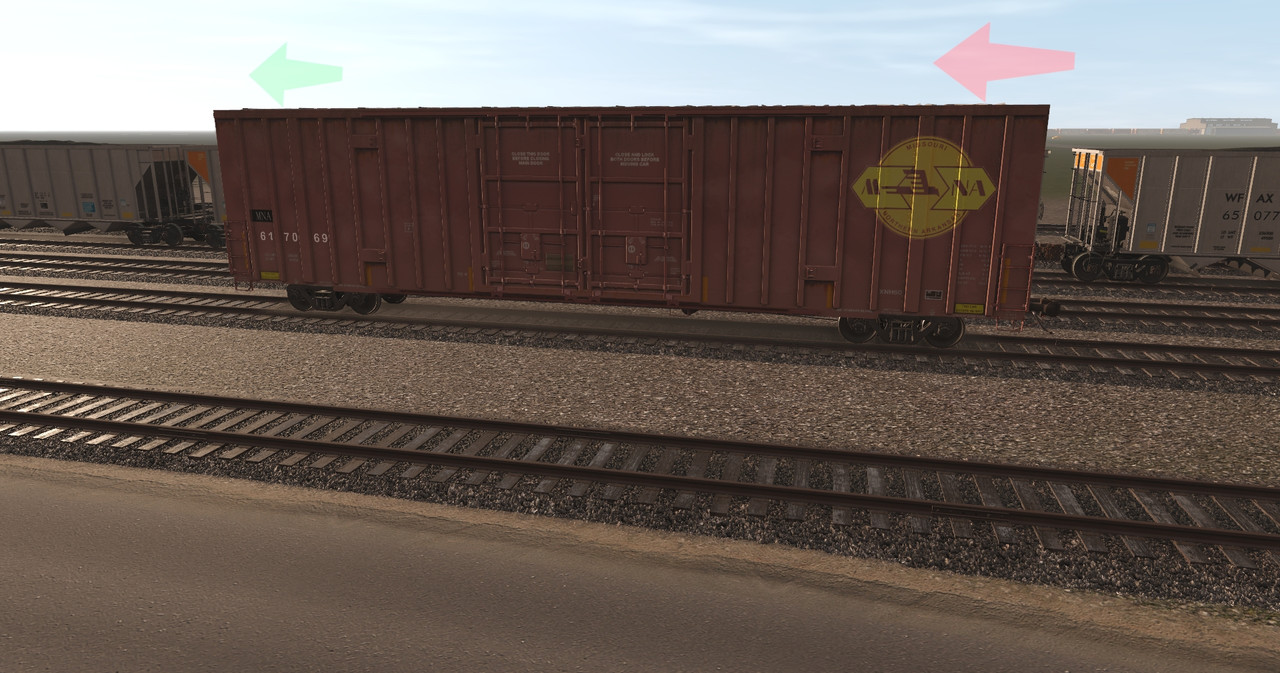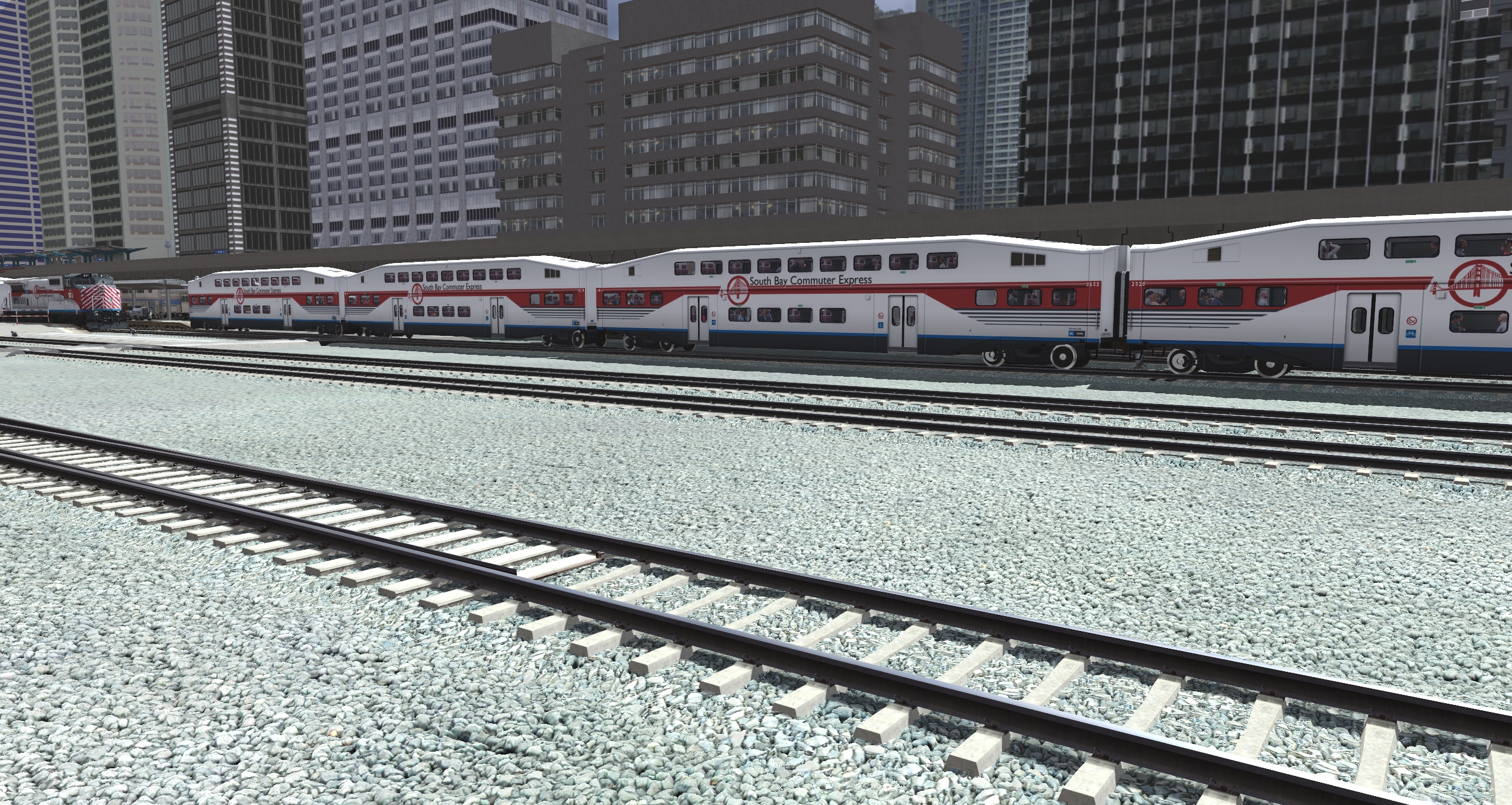Install the app
How to install the app on iOS
Follow along with the video below to see how to install our site as a web app on your home screen.
Note: This feature may not be available in some browsers.
You are using an out of date browser. It may not display this or other websites correctly.
You should upgrade or use an alternative browser.
You should upgrade or use an alternative browser.
Show off your reskins!
- Thread starter SUBWAY125
- Start date
trainzlova8989
i like trains and bugs

Two members of NYDB's 40-something stong fleet of Alco C425s rest somewhere in Pennsylvania. The seafoam blue symbolizes the Atlantic ocean, which the principal Delmarva and Jersey Shore divisions follow.
alexn3vgames
Member
New Haven 2780 series Baggage-RPO in the McGinnis scheme. Not sure if the real ones ever got the McGinnis treatment but this is the only prototypical NH RPO we have in game, so...


RetroRails12
Well-known member
Missouri and Northern Arkansas Railroad 60ft High Cube Boxcar Patch work and Logo Work... Actual Numbering for this type of boxcar... took 2 hours to do the patch and Logos!


BrianPacos
Creator, BMP Trainz
Everyone's favorite Pacific from Kansas is in our shops for a 15-year rebuild...

And here she is after a rebuild. Proper ATSF paint scheme, steam leaks fixed, and running gear rebuilt.


And here she is after a rebuild. Proper ATSF paint scheme, steam leaks fixed, and running gear rebuilt.

Last edited:
neville_hill
Well-known member
In Dearnbyshire:


startrek1011
Author
In 1955, fed up with Fairbank-Morse's continued delays in producing a dual-mode passenger locomotive, the Sequoia Mining Railroad purchased 10 GE EP-5s modified with dynamic brakes and MU equipment.

A brand new EP-5 trudges out of Sequoia with 12 heavy-weight passenger cars behind it. The SMR took advantage of the lack of need to match the New Haven's high speed to get more out of their Jets.

An EP-5 meets a trio of waiting Fairbanks-Morse HDM-16, the duel mode locomotives that the Sequoia Mining Railroad was famous for.

On approach to Mount Nightingale. Passenger demand for travel between Sequoia, Mount Nightingale, and Mount Seacole was so high that the SMR bought old Southern Pacific coaches as a stopgap until new coaching could be procured.

Arriving at Mount Nightingale, the train passes an old Y-1 locomotive. The Y-1s had already been pushed off freight duty by the HDM-16s and as the Jets arrived they were finally retired. The Jets were immensely popular with the SMR who ordered an additional 5 units, replacing all previous electric locomotives. The SMR would later buy all of the New Haven's EP-5s to supplement their existing fleet allowing the EP-5s to continue pulling trains until the very end of the SMR.

An overloaded Jet crawls away from Mount Seacole Depot, struggling to climb the two percent grade. With passenger demand so high the SMR would take advantage of the EP-5's high pulling power with long trains of heavy steel passenger cars. The SMR had paid for 4,000 HP of power and they were going to get every penny's worth out of it.
This would backfire when an EP-5 caught fire at this exact spot, after which double heading was implemented until lighter passenger cars were bought.


Being essentially a straight line, the section between the exit of the Mt. Nightingale Caldera and Mt. Seacole is known as the speedway due to its high track speed. The speed limit was 55 mph but then SMR's engineers were known to push this.

Arriving at Mount Seacole.

A brand new EP-5 trudges out of Sequoia with 12 heavy-weight passenger cars behind it. The SMR took advantage of the lack of need to match the New Haven's high speed to get more out of their Jets.

An EP-5 meets a trio of waiting Fairbanks-Morse HDM-16, the duel mode locomotives that the Sequoia Mining Railroad was famous for.

On approach to Mount Nightingale. Passenger demand for travel between Sequoia, Mount Nightingale, and Mount Seacole was so high that the SMR bought old Southern Pacific coaches as a stopgap until new coaching could be procured.

Arriving at Mount Nightingale, the train passes an old Y-1 locomotive. The Y-1s had already been pushed off freight duty by the HDM-16s and as the Jets arrived they were finally retired. The Jets were immensely popular with the SMR who ordered an additional 5 units, replacing all previous electric locomotives. The SMR would later buy all of the New Haven's EP-5s to supplement their existing fleet allowing the EP-5s to continue pulling trains until the very end of the SMR.

An overloaded Jet crawls away from Mount Seacole Depot, struggling to climb the two percent grade. With passenger demand so high the SMR would take advantage of the EP-5's high pulling power with long trains of heavy steel passenger cars. The SMR had paid for 4,000 HP of power and they were going to get every penny's worth out of it.
This would backfire when an EP-5 caught fire at this exact spot, after which double heading was implemented until lighter passenger cars were bought.


Being essentially a straight line, the section between the exit of the Mt. Nightingale Caldera and Mt. Seacole is known as the speedway due to its high track speed. The speed limit was 55 mph but then SMR's engineers were known to push this.

Arriving at Mount Seacole.
BrianPacos
Creator, BMP Trainz
Canadian Pacific "Royal Hudson" no. 2860 emerges from the Summers Spring Shops after a running gear and boiler rebuild...


In the coming weeks some final ancillary appliances will be fitted/tested, and the locomotive will be tested on the Arizona Central's weekend excursion trains before being sent back to Squamish, BC.


In the coming weeks some final ancillary appliances will be fitted/tested, and the locomotive will be tested on the Arizona Central's weekend excursion trains before being sent back to Squamish, BC.
Trainmaster189
Active member
Very nice ex-KCS CPKC SD70MAC!
I only heard of CN's SD75IAC rebuild program happening in real life.
I only heard of CN's SD75IAC rebuild program happening in real life.
Railroader1970
Active member
Nice work Walter.Just a quick fictional gp15 reskin for Adams Cement....

Cheers
Walter
- RR70
Nice work Walter.
- RR70
Thanks. I found that the trackmobile was too underpowered for moving loaded hoppers. An inexpensive GP15 replaces both trackmobiles and can handle more cars. Helps the companies bottom line and the crews are much happier.

Last edited:
Railroader1970
Active member
What kind of font did you use for the running numbers on the cab sides?Thanks. I found that the trackmobile was too underpowered for moving loaded hoppers. An inexpensive GP15 replaces both trackmobiles and can handle more cars. Helps the companies bottom line and the crews are much happier.

Similar threads
- Replies
- 0
- Views
- 744
- Replies
- 1
- Views
- 599
- Replies
- 3
- Views
- 245












